In cloud computing environment, dynamic resource allocation and reallocation are keys for accommodating unpredictable demands. Online processing of continuous data flow produce very high load. Current system does not scale with input load due to single-node bottlenecks. This happens because of static configuration leading to under or over utilization. This article explains about how bottlenecks could be avoided in a distributed cloud, where application developers can selectively lease distributed resources. This could be handled by enabling effective adjustment of resources to the incoming load which is by facilitating cloud through dynamic load balancing and elastifying.
Keywords |
| Data streaming, scalability, elasticity, Decommissioning |
INTRODUCTION |
| Current cloud computing providers mainly rely on large and consolidated datacenters in order to offer their
services. This centralized infrastructure brings many challenges like need for resource over provisioning and costly heat
dissipation and temperature control and also naturally increases average distance to end user [11] |
| In the last few years, there have been substantial advancements in the field of data stream processing. From
centralized Stream Processing Engines (SPE) [6], the state of the art has advancement to SPEs able to distribute different
queries among a cluster of nodes or even distributing different operators of a query across different nodes [4]. However,
some applications have reached the limits of current distributed data streaming infrastructure. Many applications exhibit
sudden change in the workload that can result in a variation of order of magnitude between peak and valley loads. |
| A parallel processing engine deployed on a fixed number of processing nodes leads to either under provisioning or
over provisioning. Under provisioning results in the violation of service level agreement that incur high economic costs
eventually leading to unhappy users and raising bad reputation. Similarly over provisioning is not cost effective but
resources are not fully utilized. |
| Under distributed datacenters one may understandably take advantage to improve cost and performance. However,
using public infrastructure for communication between datacenter and end user will be far effective. The drawback with
this approach is that it transfers traffic control to Internet Service Providers. |
| The service engine at cloud datacenters should be elastic and adjust amount of resources to current workload.
Moreover, elasticity should be combined with dynamic load balancing. Without dynamic load balancing the system would
provision new nodes as a result of uneven distribution. Therefore, the saturation of a single node would lead to unnecessary
provisioning of new instances. With dynamic load balancing, new nodes are provisioned only when the system as a whole
does not have enough capacity to cope with incoming load. |
| This article lights on challenges for resource allocation in distributed clouds and a scalable, elastic processing
engine providing transparent parallelization. |
II. PROBLEM DEFINITION |
| In a Cloud context, establishing trust should be based on both identities and properties. Establishing a trust model in
any system is quickly seen to be a complex problem. The additional components which contribute to a Cloud environment
mean that models for establishing trust, where cloud is distributed in addition to their essential offerings, such as scalable
services, on demand usage and pay-as-you-go business plans, distributed clouds also take advantage of geo-diversity and
also infrastructure complexity, application interdependencies, and the range and size of stakeholders all contribute to the
challenge. |
| To overcome these limitations, we choose a generic and distributed solution that may be used in the context of
many types of services. This is a distributed cloud scenario, where cloud providers hire infrastructure on demand and
acquire dedicated connectivity and resources from communication providers. It is important to highlight that the
infrastructure may range from routers and links to servers and databases. The processing engine operating on logical data
streams should be split into multiple physical data sub streams that flow in parallel, thus avoiding single-node bottlenecks.
Communication across different nodes is minimized and only performed to guarantee semantic transparency. |
III. PROPOSED MODEL |
| Resource allocation in distributed clouds, focusing four fundamental points |
| . Resource modeling |
| . Resource offering and Treatment |
| . Resource discovery and monitoring |
| . Resource selection |
| When conceiving a distributed cloud, it is natural for its provider to choose the nature of its offering Software,
Infrastructure and Platform as a Service. |
3.1 Conceptual Architecture: |
| Among those four fundamental factors it can be categorized into two phases |
| . Conception phase |
| . Operational phase |
| Getting into fundamentals as follows |
Resource modeling: |
| The cloud resource description defines how the cloud deals with infrastructural resources. The granularity of the
resource description is important. If resources are described using many details, there is risk that the resource selection and
optimization phase could become hard. Adding to it interoperability also stands in path. According to [12], interoperability
in the cloud faces vertical and horizontal heterogeneities. |
Resource Offering and Treatment: |
| The RAS must ensure that all requirements may be met with the available resources. These requirements have
been defined previously between the provider and each cloud user, and may be represented by service level agreements
(SLA) and ensured by the provider through continuous monitoring [15]. |
| Cloud users are able to set inter-node relationship and communication restriction. |
Resource Discovery and Monitoring: |
| Resource monitoring should be continuous and should help with allocation and reallocation decisions as part of
overall resource usage optimization. |
| Monitoring may be passive or active. It is considered passive when there are one or more entities collecting
information. If monitoring is active nodes are autonomous and decide when to send asynchronously state to some central
entity. |
Resource Selection and Optimization: |
| Resource selection may be done using optimization algorithms. Resource selection strategies fall into a priori and
posteriori classes. In the priori case first allocation solution is an optimal one. In posteriori case once an initial allocation
there can be a sub optimal solution made. |
3.2 Cloud Architecture: |
| This model performs specialized workload management, job queuing mechanism, scheduling policy and resource
management. |
| The components under Conception phase are as follows, |
| User: One who submits his request. |
| Cloud Scheduler: This module acts as intermediate between user and cloud infrastructure manager. It accepts the
notification from modules beneath and queues job for execution. |
| Cloud Infrastructure Manager: It is molded with Notification module, Trust management module, organizing DBMS
module and Security token service module. This manager assists in providing a platform for doing a job. Though
distributed clusters are found Infrastructure Manager provides with dynamic functionality to individual cluster. |
| The working components under Operational phase are, |
| Cloud Gate Keeper: Since our scenario is distributed to manage among many clusters we need a gate keeper which checks
whether submission is to and from local or foreign cluster. |
| Job Manager: Currently submitted job(s) is/are organized for scheduled execution. Identifies the job and tracks them
according to their notification tag. |
| Site Job Scheduler: Local scheduling for jobs submitted before it uses the resources are supervised. It schedules the
resources available based on free resources. |
| Management services: Since our environment is distributed it should support scalable and elastic data. In order to provide
elasticity we need separate protocol running with new algorithm, provided by new module adding to this infrastructure,
which is Elastic manager. |
IV. ELASTICITY |
| Dealing with distributed cloud the working of service provider is so delicate that no flaws should be occurred providing
efficient IaaS. In order to support new age of distributed architecture the working standard is to be altered from normal
scheduling to peculiar standards. Here we are providing elasticity to our data to move around our infrastructure, which
positively influences distributed environment. |
| The atomic components and its functionality are as follows, |
| Query: The requests forwarded by user, which is to be processed in the cloud. |
| Sub Cluster: The distributed environment of cloud providing clusters of resources. |
| Cloud Instance: Among clusters of cloud which resource is currently been under current utilization for processing data. |
| Resource Manager: The module which cares about resource and its performance after and before every request. |
| Elastic Manager (EM): The proposed scenario of computing command is given life by elastic manager, which maintains
protocol standard and monitors reaction between resource, data, request and response. |
| Local Manager (LM): For every cloud instance a manager holds responsible. If a request is triggered then many modules
start its execution to take care of load. To serialize these modules Local manager paves path. |
| Input Manager: Management module that queues input though input might be from same module or from various threads. |
| Aggregate operator group: Distinguishes threads of request and identifies relation among job request queues. |
| Filter: Filters related and non related job request. Related request from same module are taken serially. |
| Map: Module checks capability of resource to execute the given request and submits it. |
| Load Balancer: Balances load in the resources by checking under or over utilization of resources. |
4.1. Elastic Protocol: |
| Elasticity rules are specified as thresholds that set the conditions that trigger provisioning, decommissioning or load
balancing. Provisioning and Decommissioning are triggered if the average CPU utilization is above the Upper Utilization
Threshold (UUT) or below the Lower Utilization Threshold (LUT). Reconfiguration actions aim at achieving an average
CPU utilization as close as possible to Target Utilization Threshold (TUT). |
| Load balancing is triggered when the standard deviation of the CPU utilization is above the Upper Imbalance Threshold
(UIT). |
| In order to enforce the elasticity rules, the EM periodically collects monitoring information from all instances on each
subcluster. |
| The information includes average CPU usage (Ui). The EM computes the average CPU usage per sub cluster (Uav). If Uav is
outside the allowed range, the number of instances required to cope with the current load is computed. If the subcluster is
under provisioned, new instances are allocated. If the sub cluster is over provisioned, the load of un needed instances is
transferred to the rest of instances by offload function. |
| Load balancing is triggered if Usd > UIT and is based on greedy algorithm. |
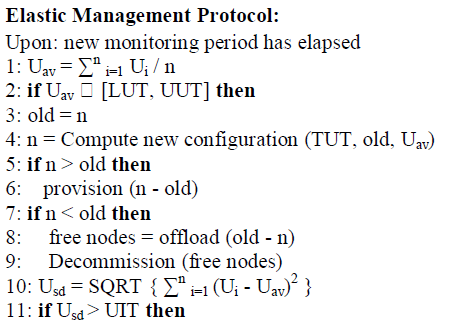 |
| 12: BalanceLoad (Usd) |
V. NOTIFICATION MODULE |
| This module keeps on notifying the cloud scheduler about the job submission to and from cloud infrastructure manager.
The Delivery notification is send to user. |
| Cloud Infrastructure manager (CIM) checks service instances for request submitted by user for existence. If the particular
topic exists then CIM uses historic path for successful execution. |
| The service data set is associated with a service instances. Regarding a service data change, the service data wrapper sends
a change notification message to the service data set. If the change is valid for the constraint expressed in the published
Topic then a separate thread is created to deliver the change message. |
VI. ORGANIZING DBMS |
| Based upon the principle of keeping the existing data management systems and its interfaces intact, this model attempts to
expose the underlying data model and native language API for resource manager. |
| External Data Resource Manager (EDRM) and Data Resource Manager (DRM) is a relational database management
system. The DRM represents the EDRM and binds it to the existing EDRM. It provides start and stop query capabilities.
External Data Resource (EDR) and Data Resource (DR) is a directory in a file system, it exposes the metadata about the
external data resource. It must provide access and update query capabilities. |
| External Data Set (EDS) and Data Set (DS) are the logical database view or a file cache. |
| Data Activity Session - It is a logical data session fro all data operations. |
| Data Request - It is logical information regarding a request submitted by requester to data access session. This can be a
query, data manipulation activity or others. |
VII. SECURE TOKEN SERVICE MODULE |
| The requester must possess a secure token to establish a secure message channel to the web service end point. Here the
service may need to request tokens from other trusted parties called secure token services. |
| The WS- Trust deals with different aspects of secure token services, including issuance of tokens must be secure and built
on top of WS - Security. |
| WS - Federation defines mechanisms that are used to enable identity, attribute, and authentication and authorization
federation across different trust environments. |
VIII. EVALUATION |
| In the set of experiments evaluating effectiveness of provisioning and decommissioning is done. |
| The LUT = 0.5, UUT = 0.9 and TUT = 0.6 is been set. The load is increased and decreased linearly to observe the
effectiveness of provisioning and decommissioning. |
| This figure Fig. 5. Shows the behavior of the individual provisioning strategy, i.e., when provisioning one instance at a
time. The system behavior is studied growing 1-15 instances. The throughput increases linearly with the input load, despite
negligible variation at each step. For larger configuration (e.g., 15 nodes), provisioning of one instance results in a
negligible increase of the overall computing power, leading to an average CPU utilization close to the upper threshold. |
| As the number of provisioned node is computed on the current subcluster size and load, each provisioning step achieves
the TUT. Fig. 6 Moreover, load-aware provisioning affords less frequent reconfiguration steps than individual
provisioning. Hence, the system reaches higher throughput with fewer reconfiguration steps. |
| Decommissioning of resources from our distributed scalable system also shows good behavior as, |
| The decommissioning intrusiveness is lower than provisioning due to decreasing load leading to effective working of
system Fig. 6 That is, once instances are transferring ownership the decreasing input rates result in a CPU average
utilization slightly below the TUT. |
IX. CONCLUSION |
| The system which is been presented has high scalability and can withstand elastic data flowing through distributed cloud.
This system also provides transparent parallelization. Scalability is attained by means of a novel parallelization strategy that
minimizes the distribution overhead. Elasticity and dynamic load balancing minimizes number of resources used for
copying with varying workloads. The evaluation demonstrates large scalability and effectiveness of a distributed cloud
supporting elastic data. |
Figures at a glance |
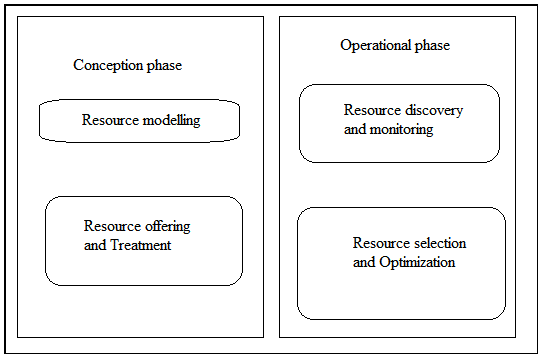 |
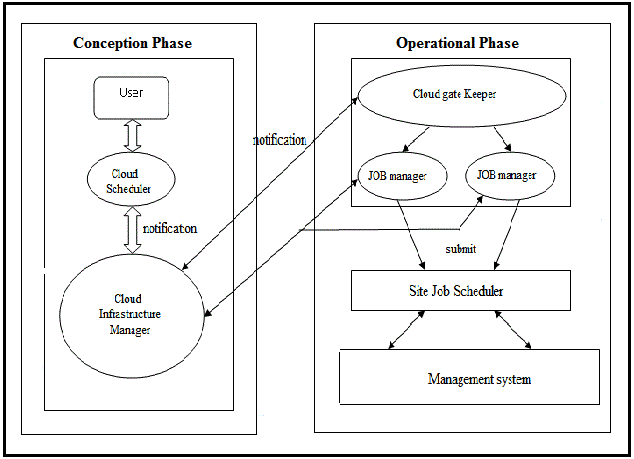 |
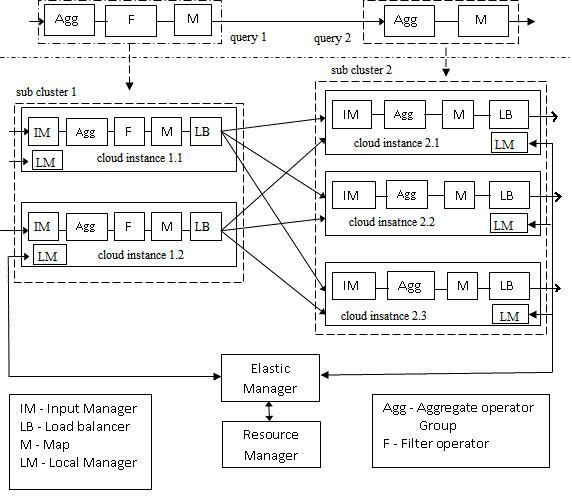 |
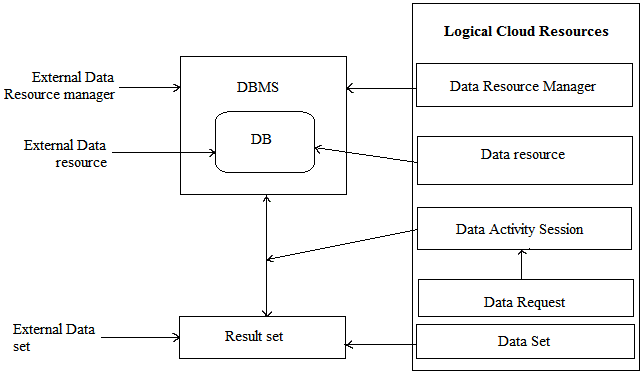 |
| Figure 1 |
Figure 2 |
Figure 3 |
Figure 4 |
|
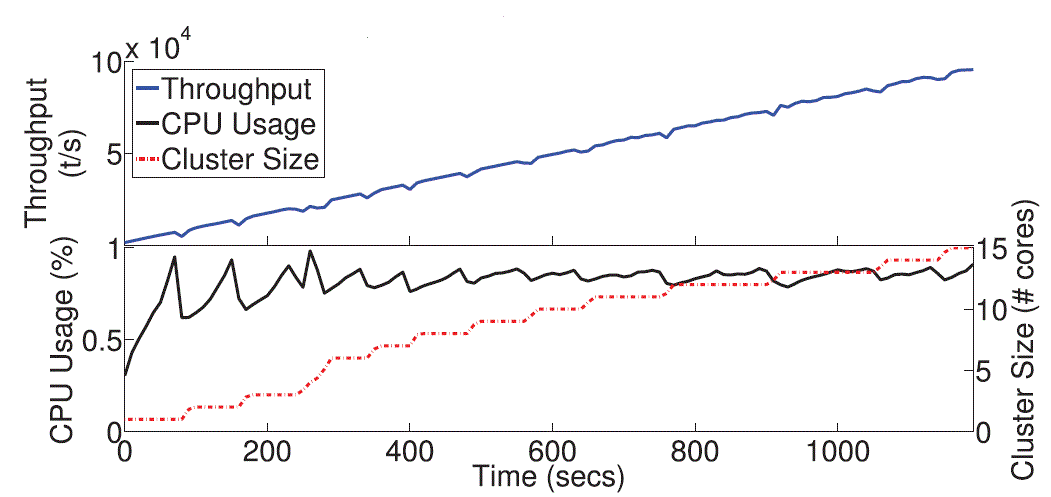 |
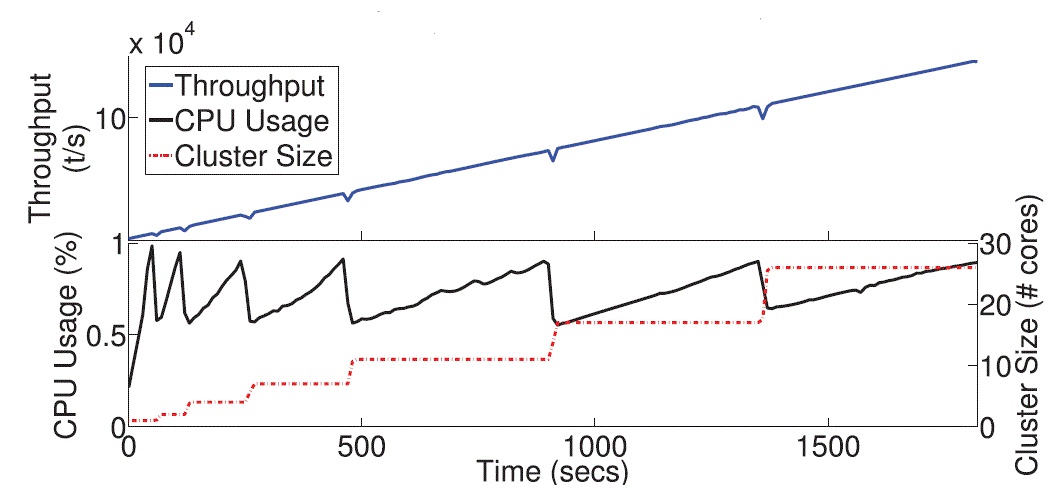 |
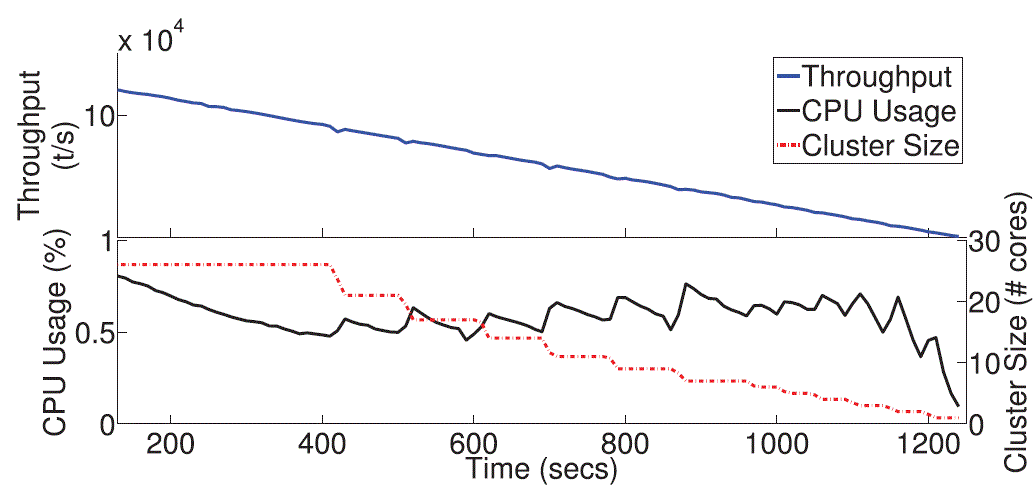 |
| Figure 5 |
Figure 6 |
Figure 7 |
|
|
References |
- Abawajy J. (2011) âÃâ¬ÃËA Dynamic Job Grouping- Based Scheduling For Deploying Applications with Fine-Grained Tasks on Global CloudsâÃâ¬Ã⢠10th International Symposium on Pervasive Systems, Algorithms and Networks (ISPAN) pp. 784-8
- AbbadiImad M.(2011) âÃâ¬ÃËOperational trust in cloudsâÃâ¬Ã⢠environment. In: MoCS 2011: Proceedings of the Workshop on Management of Cloud Systems. IEEE; June 2011.
- AbbadiImad M. Toward trustworthy cloudsâÃâ¬Ã⢠internet scale critical infrastructure. In: ISPEC in proceedings of the 7th information Security.
- Abadi DJ et al., âÃâ¬ÃÅThe Design of the Borealis Stream Processing Engine,âÃâ¬Ã proc. Second Biennial conf. Innovative DataSystems Research (CIDR), pp. 277- 289, 2005
- BleikertzSoÃâèren, Schunter Matthias, Probst Christian W,PendarakisDimitrios, Eriksson Konrad. Security audits of multi-tier virtual infrastructuresin public infrastructure clouds. In: Proceedings of the 2010 ACM workshop on Cloud computing security workshop, CCSW âÃâ¬Ãâ¢10. New York, NY,USA: ACM; 2010. p. 93e102
- Buyya R., Yeo C. S., and Venugopal S. (2010) âÃâ¬ÃËAn Efficient Approach to Task Scheduling In CloudâÃâ¬Ãâ¢In Proceedings of the 10th IEEEInternational Conference on High Performance Computing and Communications Vol 27 pp. 81-94
- Chandrasekaran S et al., âÃâ¬ÃÅTelegraphcq: Continuous Dataflow Processing for an uncertain World,âÃâ¬Ã proc. First BiennialConf. Innovative Data Systems Research (CIDR), 2003
- Foster I., Kesselman C., Tuecke S. (2010) âÃâ¬ÃËIntelligent workload factoring for a hybrid Cloud Computing ModelâÃâ¬Ã⢠International Journal ofSupercomputer Applications
- Gansen Z., Chunming R., Jin L., Feng Z., Yong T.2010) âÃâ¬ÃËAn Optimistic Differentiated Service Job Scheduling System for Cloud ComputingService Users and ProvidersâÃâ¬Ã⢠IEEE Second International Conference on Cloud Computing Technology and Science pp. 97, Nov. 30- 2010 - Dec. 3-2010
- Imad M. Abbadi, Andrew Martin (2011) âÃâ¬ÃËTrust in the CloudâÃâ¬Ã⢠Department of Computer Science, University of Oxford, United Kingdominformation security technical report xxx (2011) pp. 1-8
- Katz Randy H, Konwinski Andrew, et al. Above the Clouds: A Berkeley View of CloudComputing,http://www.eecs.berkeley.edu/Pubs/TechRpts/2009/EECS-2009-28.pdf; 2009
- Sheth A and A. Ranabahu, âÃâ¬ÃÅSemantic Modeling for cloud computing, Part I,âÃâ¬Ã IEEE Computer Society - Semantics &Services, 2010
- Tian L., LING Y. (2010) âÃâ¬ÃËNode Allocation in Cloud Computing Using Optimal Resource Constraint (ORC) SchedulingâÃâ¬Ã⢠International Conferenceon Computer Application and System Modeling (ICCASM 2010) Vol.7 pp. 567 22-24 Oct. 2010
- Valancius V et al., âÃâ¬ÃÅGreening the internet with Nano Data Centres,âÃâ¬Ã Proc. 5th international conference on Emerging Networking Experiments andTechnologies, 2009, pp. 37-48.
- C. A. Yfoulis and A. Gounaris, âÃâ¬ÃÅHonoring SLAs on Cloud Computing Services: A Control Perspective,âÃâ¬Ã Proc. EUCA/IEEE Euro. Control Conf.2009
|